Throughout the freight shipping industry, the transportation of intermodal freight is powering the efficiency of how we move goods globally. Imagine seamlessly transferring a shipment of goods from a massive ship to a cross-country railroad, then to a truck destined for your local warehouse, without ever unpacking it. That’s the magic of the transportation of intermodal freight— a coordinated dance between different travel methods that makes sure products from across the world reach your doorstep.
Basics of Transportation of Intermodal Freight
At its core, intermodal transportation involves moving goods using more than one mode of transportation. Simply put, it’s about seamlessly transferring products from trucks to trains, ships to rails, or a combination thereof, without directly handling the cargo itself. This method optimizes the strengths of each transportation mode to move freight quickly, efficiently, and often more eco-friendly.
The key components of intermodal transportation include:
- Freight Containers: Standardized, secure containers that protect goods across different transportation modes
- Transportation Modes: Trucks, trains, ships, and sometimes aircraft.
- Intermodal Facilities: Ports, terminals, and depots where cargo is transferred between modes.
- Logistics and Coordination: Planning and managing the movement of goods to ensure seamless transitions and timely deliveries.
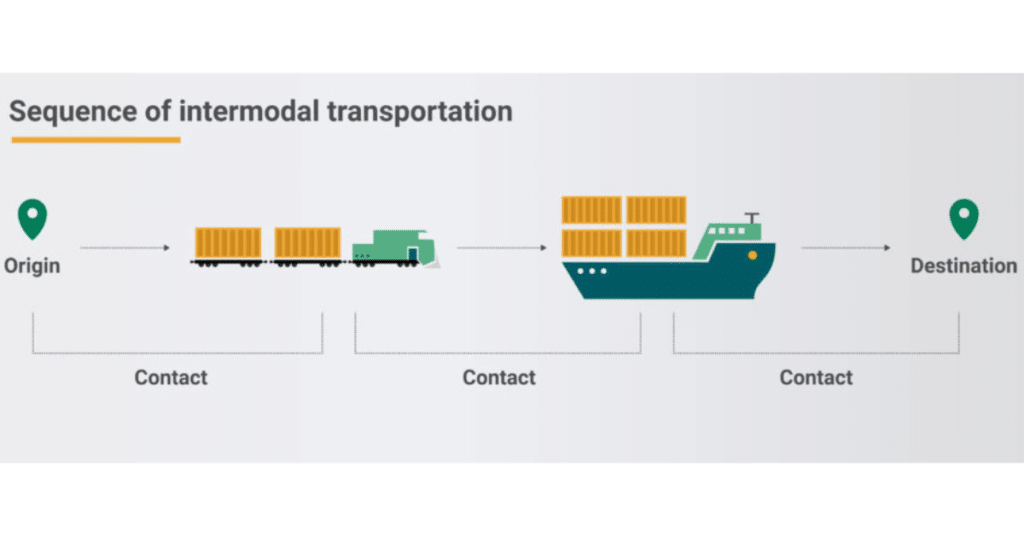
History and Evolution
- 1950s: The modern concept of containerization begins with the idea of moving truck-sized containers onto ships, reducing cargo handling and damage.
- 1960s: Container ships enter widespread use, revolutionizing maritime shipping.
- 1970s: Rail and truck industries adapt to containerization, leading to the development of intermodal services.
- 1980s – 1990s: Technological advancements and globalization spur growth in intermodal freight, making it more efficient and reliable.
- 2000s – Present: Emphasis on sustainability and technology further refines intermodal transport logistics.
Key Milestones
- 1956: Malcom McLean ships the first container from Newark to Houston, marking the beginning of containerization.
- 1984: The standardized ISO container sizes are finalized, enhancing global trade.
- 1990s: The development of double-stack train technology allows for safer and more efficient rail transport of containers.
- 21st Century: Digital technology integrates with intermodal systems, improving tracking, efficiency, and environmental sustainability.
Key Components of the Transportation of Intermodal Freight and How They Work Together
If you’ve ever noticed a large truck on the highway carrying what looks like a huge metal box, you’ve seen an intermodal container in action. This process of moving goods involves more than one mode of transportation—hence the term ‘intermodal.’ But it’s the specific components and how they work together that truly make this an efficient, reliable system.
The transportation of intermodal freight is like a well-choreographed dance, with containers, different transport modes, and intermodal hubs playing their parts in perfect rhythm. By complementing each other’s strengths and negating weaknesses, they all work together to move goods on time, every time.
Containers
When transporting goods via intermodal, containers play a crucial role in efficiently moving goods from one form of transport to another. These aren’t your everyday freight boxes, but robust, standardized, and securable metal containers designed to protect the goods inside.
Intermodal containers’ most important feature is the ability to be adapted to several modes of transportation. As a result, these containers need to keep their cargo safe and secure throughout both their journey along the supply chain, and during the transfer between various modes of transportation.
Types of Containers
In the transportation of intermodal freight, the choice and management of containers, especially specialized ones like ISO tanks, play a pivotal role in the efficient, safe, and cost-effective movement of goods worldwide.
Dry Freight Containers
Though containers can vary in size and types, the most commonly used are the Dry Freight 20-foot and 40-foot variants, often utilized for a wide range of goods from electronics and clothing to smaller vehicles.
- 20-foot container (TEU): Stretching approximately 20 feet in length, these containers can typically hold items like a single car or the furniture and belongings of a small studio apartment.
- 40-foot container (FEU): Offering double the length of a TEU, these containers facilitate the transport of larger and heavier goods more efficiently.
Refrigerated Containers
These containers are designed to transport goods requiring consistent low temperatures. Designed with insulating concepts and temperature maintenance systems, they protect their temperature sensitive freight.
Open Top Containers
Though these containers are similar to Dry Freight containers, Open Top has an important distinction: they do not have a roof. These containers are used when large items need a larger entrance than standard containers.
Flat Rack Containers
Flat Rack containers are designed to be collapsible. Much like the Open Top containers, Flat Rack containers ensure that unwieldy cargo that does not fit in standard containers can be placed via the open sides.
Insulated Containers
Like Refrigerator containers, Insulated containers maintain their cargo’s temperature. Unlike Refrigerator containers, Insulated containers are designed to keep cargo at a higher temperature, rather than lower. They also provide warm and dry spaces for freight that cannot get wet.
ISO Tank Containers
An ISO Tank is a cylindrical container constructed to transport bulk liquids – both hazardous and non-hazardous – in accordance with ISO standards. They offer an advantageous mix of safety, robustness, and cost-effectiveness over traditional transportation means like drums, totes, and flexibags. ISO tanks are preferred for their:
- Cost Efficiency: They serve as a budget-friendly, intermodal option that can replace lengthy truck hauls, reducing both cost and carbon footprint.
- Capacity Management: Ideal for overcoming the capacity constraints commonly encountered in the truck tank market.
- Intermodal Flexibility: Their design suits various modes of transport, including marine shipping.
- Purity Maintenance: The direct transfer of cargo from the manufacturer to the customer prevents contamination, ensuring the high purity of transported substances.
- Storage Solutions: When not in transit, ISO tanks can be stacked for storage, offering a less expensive alternative to on-site tanker trucks.
ISO Tank Management Services
An important aspect of shipping ISO Tank Containers is the management services that ensure these containers arrive where they’re needed, and all the other steps along the journey. At RSI Logistics, we offer comprehensive door-to-door services for the transportation of bulk liquids across North America and coordinate the logistics of each segment through a blend of rail carriers, motor carriers, terminal operators, along with cleaning and repair facilities. This tailored approach helps in reducing your costs, adhering to delivery schedules, and providing constant communication through daily status updates.
Specifications
Standard containers, including ISO tanks, are predominantly made from weathering steel. This material is chosen for its durability and ability to withstand the rigors of long journeys and varying weather conditions, aligning with the ISO’s strict guidelines to ensure seamless interoperability across global transportation networks.
Modes of Transport
The magic of intermodal freight transport lies in its flexibility to move goods via multiple channels — rail, ship, and truck.
Rail
Trains form an integral part of the intermodal transportation system, especially over long distances. Equipped to carry many containers at a time, rail transport is a cost-effective and environmentally friendly option for moving massive quantities of goods.
Ship
Maritime transport, or using ships to move goods, is arguably the backbone of global trade. Particularly beneficial for long-haul international routes, ships can carry massive loads and help in connecting continents.
Truck
Trucks offer flexibility and accessibility that other means can’t. They are often used for short distances, such as transporting containers to and from ships or trains and delivering goods straight to customers’ doors.
Intermodal Hubs
To make this system work seamlessly, we need points of transfer, known as intermodal hubs or terminals.
Definition
An intermodal hub is a location where goods are transferred from one mode of transport to another. For example, these can be seaports where containers are moved from a ship to a truck, or a rail yard where goods are transferred to a train.
Roles
Intermodal hubs serve several critical functions:
- Transfer Points: These hubs are where the physical transfer of cargo between different modes happens — like getting your luggage from a plane to a car at an airport.
- Storage and Sorting: They are also used to temporarily store cargo and sort it for its next journey, helping ensure it gets to the right place at the right time.
- Customs Processing: For international shipments, intermodal hubs often handle customs and inspections procedures to ensure legal compliance with import/export regulations.
Global Impact of the Transportation of Intermodal Freight and the U.S. Role
The world is more connected than ever, and the transportation of intermodal freight plays a pivotal role in this global network. Imagine the global trade system as a vast ocean, and intermodal transport as the ships that keep goods—and thereby economies—flowing smoothly. The United States isn’t just any ship in this ocean; it’s more like a leading flagship, guiding trends and setting standards.
Global Landscape of the Transportation of Intermodal Freight
Global Trends
- Sustainability and Eco-friendliness: There’s a global shift towards more sustainable and environmentally friendly transport solutions. Intermodal transport reduces the carbon footprint by utilizing trains and ships that are more fuel-efficient over long distances compared to trucks.
- Technological Advancements: The use of technology, including GPS and blockchain, is improving the efficiency and security of intermodal transport. Tracking systems and smart contracts ensure that goods are monitored and handled efficiently across borders.
- Increased Urbanization: As more people move to cities, the demand for goods and the complexity of delivering them increase, making efficient intermodal systems crucial for urban logistics.
The Role and Impact of the U.S.
The U.S. plays a critical role in shaping the global intermodal transport scene, thanks to its vast domestic market, technological advancements, and significant investments in infrastructure. The country’s strategic location between the Atlantic and Pacific Oceans also positions it as a vital link in international trade, particularly between Asia and Europe.
U.S. Innovations and Leadership
Innovations
The U.S. is at the forefront of integrating technology in intermodal transport:
- Automated Ports: U.S. ports are implementing automation to speed up the handling and transfer of containers, reducing downtime and costs.
- Advanced Tracking: Utilizing GPS and IoT (Internet of Things) technology, the U.S. has enhanced the tracking of cargo, making the supply chain more transparent and efficient.
- Green Initiatives: The U.S. is leading by example in adopting eco-friendly practices, such as using electric trucks for short hauls and investing in cleaner fuel technology for ships and trains.
Influences
- The U.S. has influenced global standards and practices in security and operational efficiency. Through initiatives like the Container Security Initiative (CSI), the country has set new international benchmarks for cargo security.
- By innovating in intermodal strategies, the U.S. drives competitive practices worldwide, encouraging other nations to adopt efficient, sustainable intermodal systems.
Benefits and Challenges of the Transportation of Intermodal Freight
Though the transportation of intermodal freight presents a more efficient, economical, and eco-friendly way to move goods around the world, it’s not without its hurdles. Understanding these can help us appreciate what goes on behind the scenes every time we receive a package at our doorstep.
Environmental Advantages
Carbon Footprint Reduction
One of the most praised benefits of intermodal transport is its ability to reduce the carbon footprint associated with moving goods from point A to point B.
- Efficiency: By leveraging the strengths of different modes of transport (like ships and trains, which are more fuel-efficient for long distances than trucks), intermodal transport minimizes the amount of fuel used per cargo mile.
- Less Road Congestion: Since goods are moved in bulk using trains or ships for a major part of their journey, there are fewer trucks on the road. This not only reduces emissions but also lowers the stress on road infrastructure.
Imagine trains and ships as carpooling on a massive scale, where instead of individuals, it’s cargo that’s being shared and transported efficiently.
Economic Impact
Cost-effectiveness
Intermodal transport offers a cost-advantage by optimizing the transportation process.
- Bulk Movement: Moving goods in bulk via rail or ship reduces costs significantly when compared to the expenses associated with long-haul trucking.
- Lowered Handling Costs: The standardized use of containers means goods don’t need to be unloaded and reloaded at each transfer point, saving on handling costs.
Economic Benefits
The ripple effects of intermodal transport on the economy are vast.
- Job Creation: It supports a wide range of jobs, from logistics coordinators to truck drivers and port workers.
- Trade Enhancement: By improving the efficiency and reliability of shipping, it enhances trade between regions and countries, contributing to economic growth.
Challenges Faced
Despite its advantages, the transportation of intermodal freight faces several challenges.
Operational Issues
- Complex Coordination: Coordinating between different modes of transport and handling the logistics can be intricate and prone to error.
- Delays: Any hiccup in one part of the transport chain (like customs delays at ports) can disrupt the entire schedule.
Infrastructural Issues
- Aging Infrastructure: In many parts of the world, transport infrastructure, especially railways and ports, needs upgrading to handle modern cargo loads efficiently.
- Limited Accessibility: Some areas may not have easy access to rail or water transport, relying heavily on trucking over long distances.
Logistical Issues
- Container Imbalances: The uneven flow of trade (more imports than exports, or vice versa) can lead to an imbalance of container locations, driving up costs.
- Security and Theft: Given the number of transfer points, there’s an increased risk of cargo theft or loss.
Technological Innovations in the Transportation of Intermodal Freight
From robots loading cargo in ports to digital ledgers tracking every step a package takes, innovations are making transport faster, more reliable, and even greener.
Automation in Terminals
Current and Future Scenario
- What It Is: Imagine robots and computer systems taking over tasks like moving containers around in ports or sorting them onto trains. This is automation in terminals.
- Looking Ahead: As we look into the future, expect to see even more advanced robots (think self-driving cranes) and AI systems that can predict the most effective ways to move goods, further speeding up the process and lowering costs.
Green Technologies
Examples
- Electric Vehicles (EVs): Electric trucks and tugs, used in ports and for short-distance hauls, cut down on pollution.
- Solar-Powered Operations: Some terminals and warehouses are using solar panels to generate clean energy for their operations, reducing dependency on fossil fuels.
- Low-Emission Trains: Trains that run on alternative fuels or electricity offer a more environmentally friendly option for moving goods over long distances.
Benefits
- Environmental Protection: By cutting down on greenhouse gas emissions, these technologies help fight climate change.
- Cost Savings: In the long run, using renewable energy and electric vehicles can be cheaper than paying for diesel and electricity from non-renewable sources.
Safety and Regulations
Keeping cargo and people safe while ensuring smooth operations across different regions and transport modes requires a delicate balance of procedures, precautions, and adherence to an ever-evolving regulatory landscape.
Safety Protocols
Procedures & Precautions
- Training: Just like pilots spend hours in flight simulators, workers in the transport industry undergo rigorous training. This includes handling equipment, dealing with hazardous materials, and emergency response drills.
- Equipment Maintenance: Regular checks and maintenance of trucks, cranes, ships, and railcars ensure that they are in top working condition, reducing the risk of accidents due to mechanical failure.
- Security Measures: From sealing containers to installing surveillance cameras in terminals, various security measures are in place to protect the cargo from theft or tampering.
Safety in transportation is like a complex dance that requires every participant to know their steps perfectly, ensuring the show goes on without a hitch.
Regulatory Landscape
Current Regulations
- International Standards: Organizations like the International Maritime Organization (IMO) and the International Air Transport Association (IATA) set global standards for safety and environmental protection in their respective modes of transport.
- Local and Regional Regulations: Each country and sometimes individual states or regions within them have their own set of rules covering everything from cargo weight limits to emission standards.
Recent Changes
- Emission Controls: With an increased focus on combating climate change, recent regulations have focused on reducing emissions. This includes limits on sulfur content in fuel for ships and regulations pushing for the use of cleaner engines in trucks and trains.
- Digital Documentation: To reduce delays and increase efficiency, there’s a move towards digitizing documents like bills of lading and customs forms, which also reduces the risk of lost paperwork.
Future of the Transportation of Intermodal Freight
The sphere of intermodal transportation is looking ahead to its next big leaps, the real changes on the horizon that will reshape how we move goods across the planet. From developing trends to green goals, the future is all about moving more with less impact.
Trends to Watch
Emerging Trends
- Autonomous Vehicles: Driverless trucks and drones are no longer just a fantasy. They’re being tested right now, and they could mean faster, 24/7 delivery with fewer accidents.
- 3D Printing: It may sound like a tech buzzword, but 3D printing could mean that instead of shipping parts, we’ll just print them where and when we need them, reducing the need for transport in the first place.
Sustainability Goals
Goals
- Reducing Emissions: The big goal here is to cut down on the gases that contribute to global warming. It’s like putting intermodal transportation on a ‘low-carb diet’ to help the planet stay fit and healthy.
- Waste Minimization: Just as we’re encouraged to reduce, reuse, and recycle, intermodal transportation is looking to minimize waste—be it through better packaging or finding second lives for containers.
Roles of Intermodal Transportation
- Efficiency Leader: Intermodal transport can lead by example, showing how to move more goods with less energy and fewer emissions.
- Innovation Hub: With all its moving parts, intermodal transport is uniquely positioned to trial new technologies like alternative fuels and energy-saving systems.
Practical Advice for Shippers
Choosing an Intermodal Provider
- Reliability: Look for providers with a strong track record of delivering your goods in good condition. Damaged deliveries can cost you time, money, and customer trust.
- Network: Consider their reach. Can they take your cargo where it needs to go? The more extensive their network, the better they can meet your needs.
- Customer Service: You want a provider who will treat your cargo with care and keep you updated about its journey. Look for those who offer excellent coordination and transparent communication.
Remember, finding the right intermodal provider isn’t just about cost. It’s about finding a dependable partner for your shipping needs.
Strategies for Integration
- Flexible Scheduling: Don’t stick rigidly to timetables. If there’s one thing intermodal transport teaches us, it’s to be versatile. Adapting your schedule can optimize transportation usage.
- Green Choices: Consider providers that use green technologies. They’re not just good for the environment; they can also lead to cost savings in the long run.
As we wrap up our exploration of the transportation of intermodal freight, it’s clear that this method isn’t just about moving goods; it’s about connecting the world in the most efficient and sustainable way possible. From the initial concept of containerization to the sophisticated, tech-driven logistics of today, intermodal transportation has revolutionized how global trade operates.
Whether it’s the shirt on your back, the phone in your hand, or the food on your table, chances are they’ve journeyed through this incredible system to reach you. So, the next time you receive a package or purchase a product from another country, remember the intricate dance of intermodal freight that made it possible.
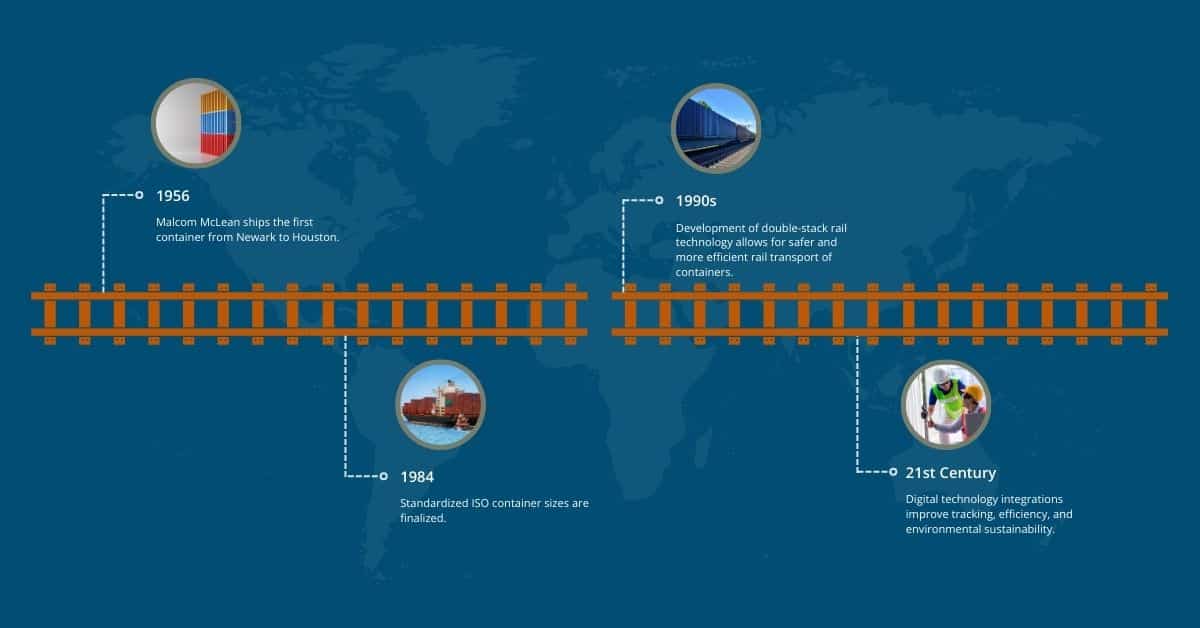
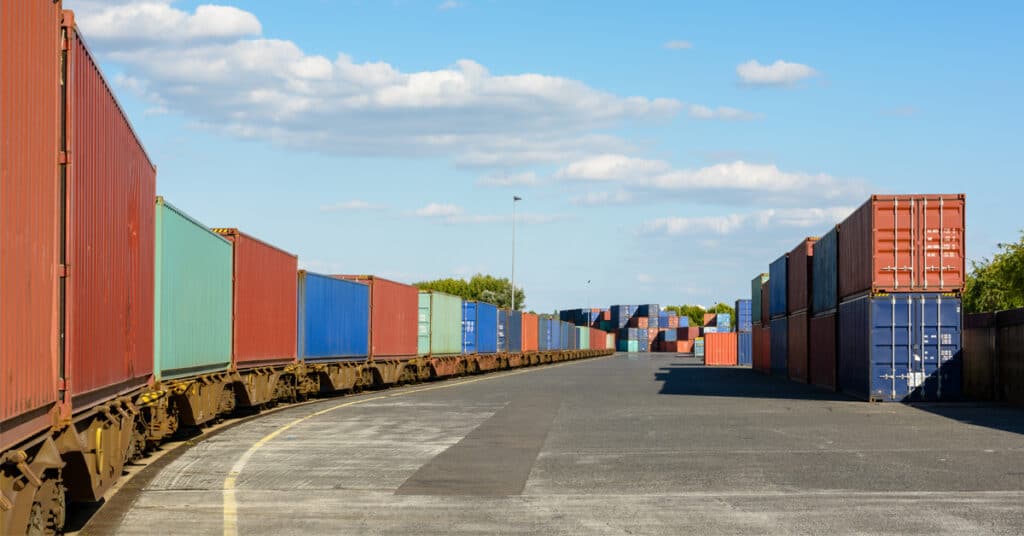
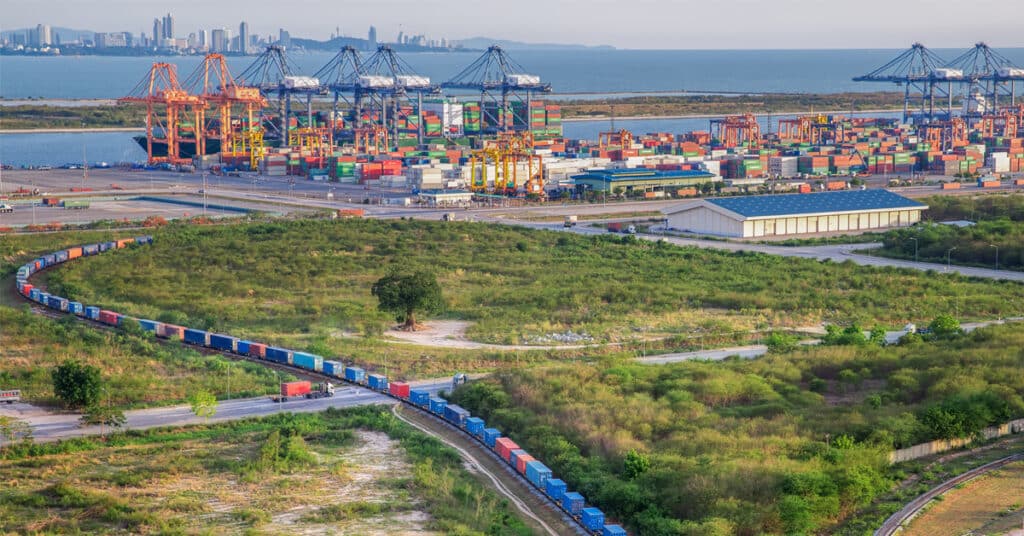
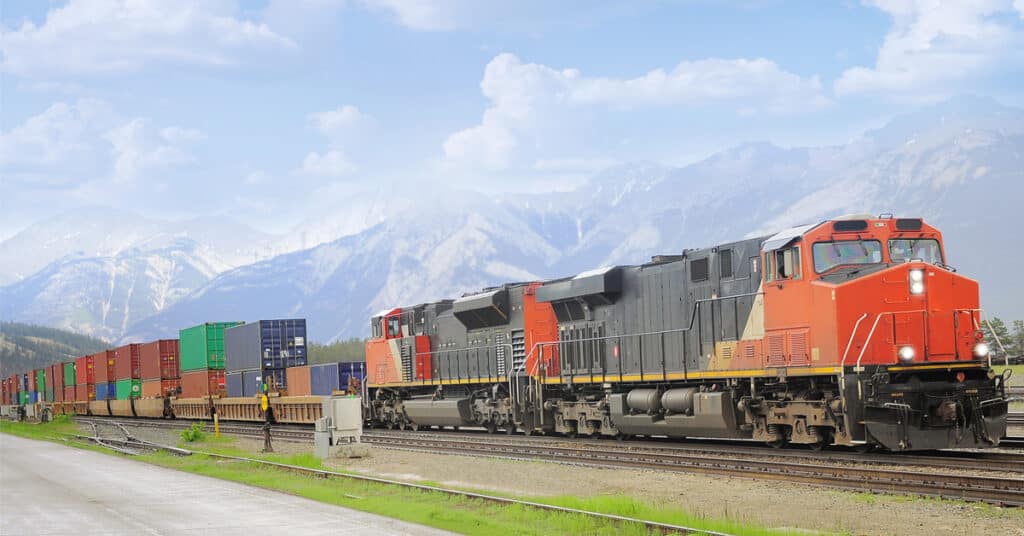
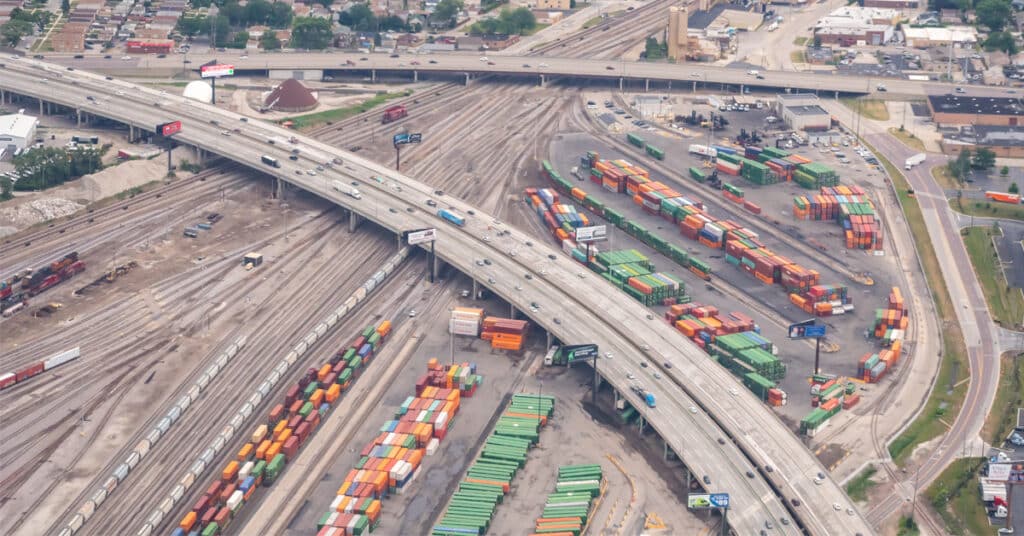
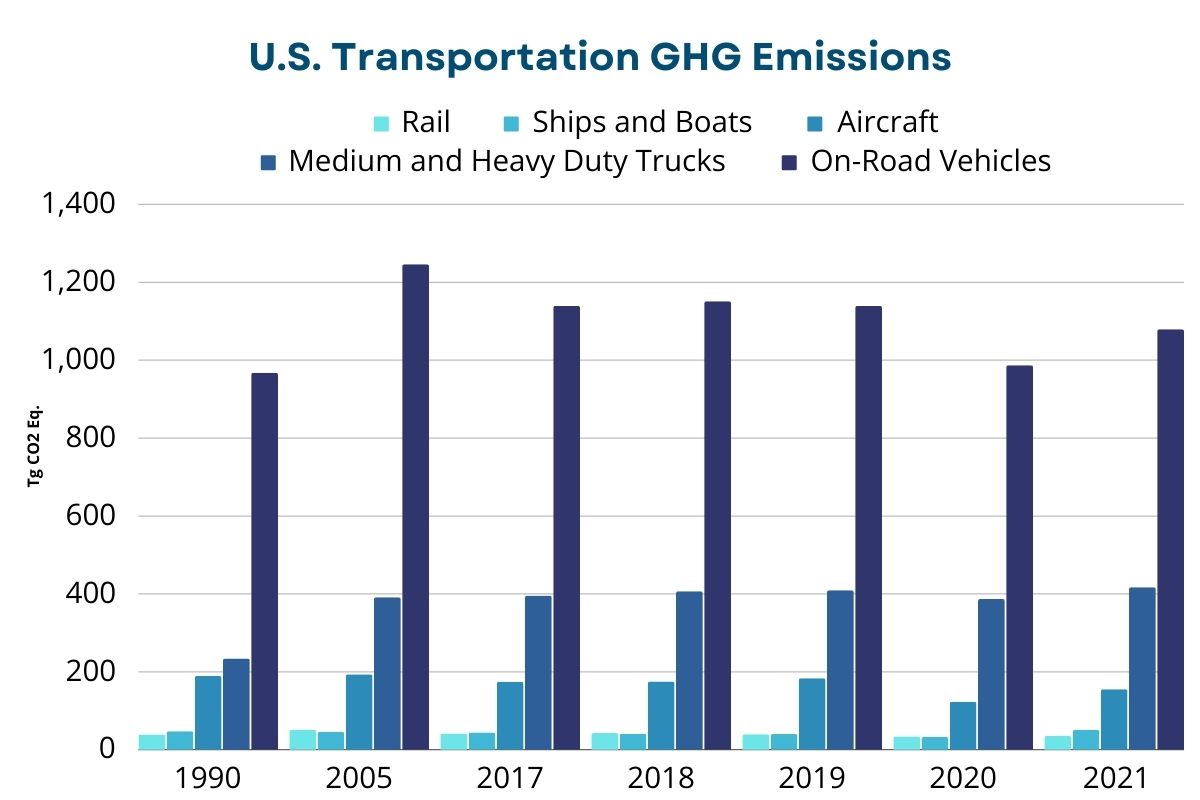
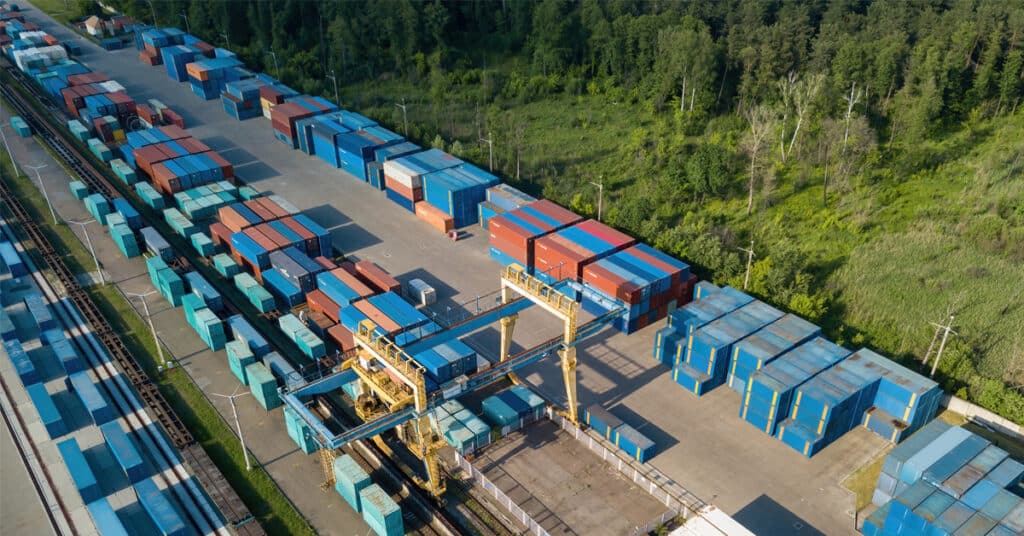
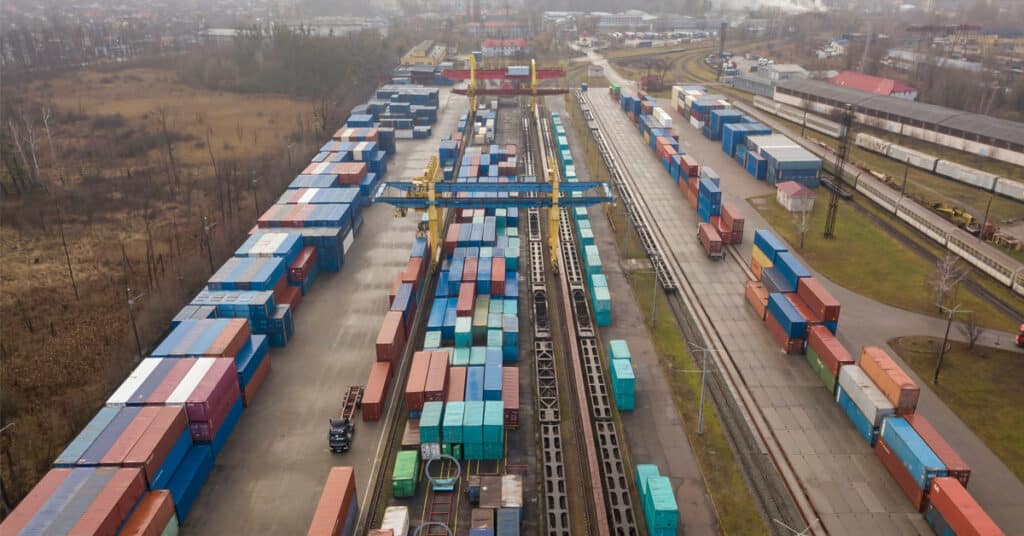
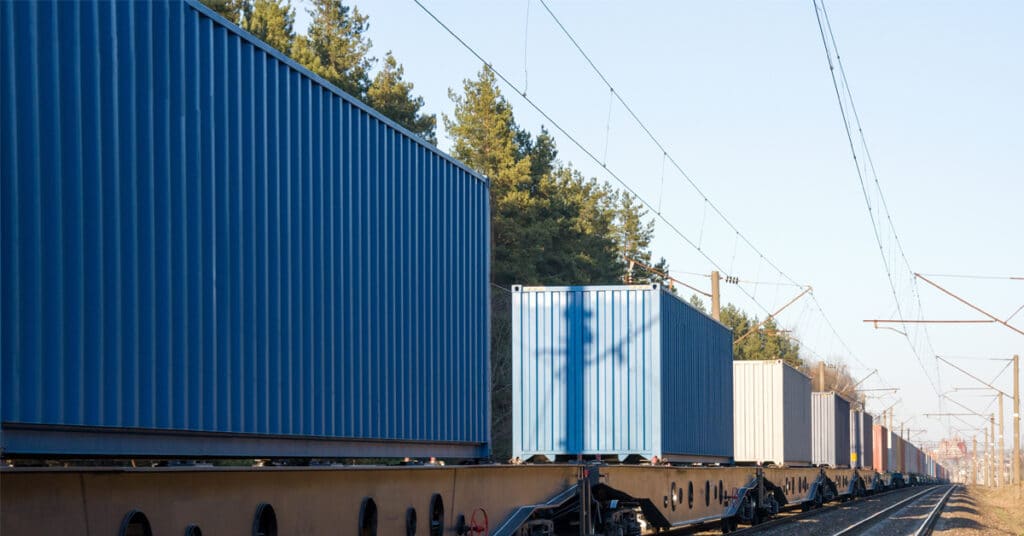

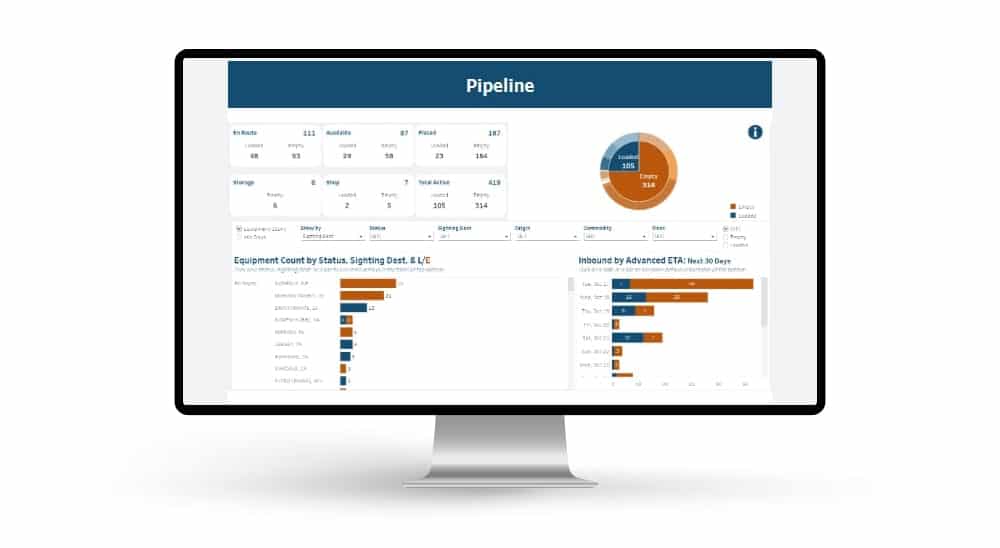 Automated exception reporting of the railcar tracking data makes it easy to identify and troubleshoot jeopardized shipments, thereby enabling you to provide better service to your stakeholders.
Automated exception reporting of the railcar tracking data makes it easy to identify and troubleshoot jeopardized shipments, thereby enabling you to provide better service to your stakeholders.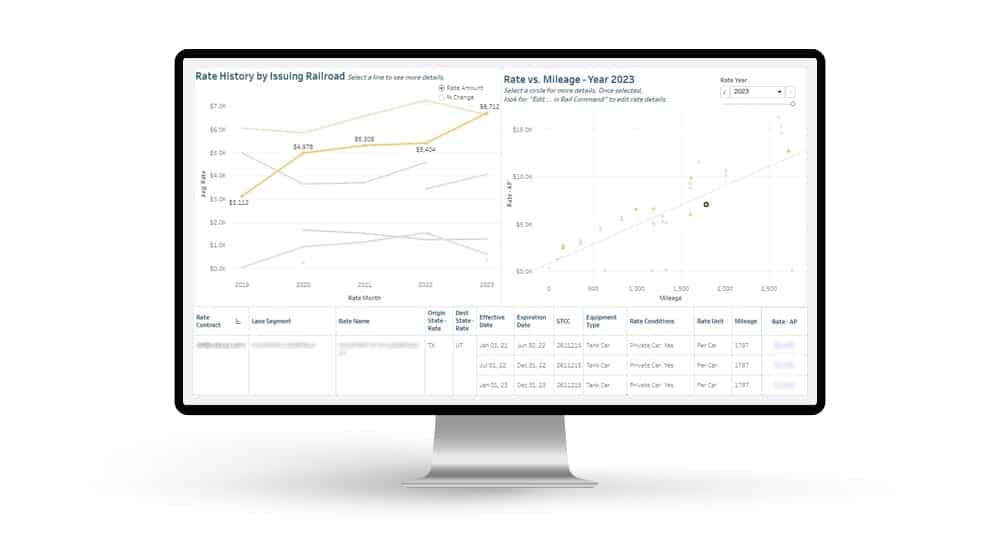 Receive notification of pending rate expirations. Tariff changes and fuel surcharges can be automatically updated.
Receive notification of pending rate expirations. Tariff changes and fuel surcharges can be automatically updated.